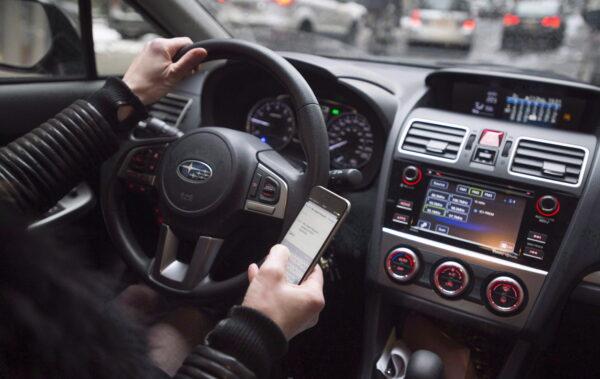A driver charged with distracted driving—for wearing earbuds on a cellphone with a dead battery—has had his appeal dismissed by the B.C. Supreme Court on grounds that he was “holding” and “using” the device.
Supreme Court Justice Heather Holmes told Patrick Henry Grzelak on Oct. 6 that she found no error in the provincial court’s ruling that he was “holding the device in a position in which it may be used.”
Grzelak was pulled over by the police in Surrey, British Columbia, on Oct. 12, 2018, while driving home from work. Officers saw him wearing earbuds and so they ticketed him for using his cellphone while driving.
Grzelak had appealed the provincial court’s ruling. He told Justice Brent Adair that even though his earbuds were in his ears, his iPhone was in the centre cubbyhole in the dashboard, and the battery was dead.
His cellphone wasn’t illuminated, nor was there music or conversation coming through his earbuds, according to court documents.
Grzelak explained the reason his earbuds were in his ears and plugged into his iPhone was because he had been “using them during a long day of telephone conference calls, and he had developed a habit of leaving them in his ears for the drive home to help block out the drone of the highway.”
Adair, however, convicted Grzelak of using his phone while driving, saying in his ruling in April 2019 that the earbuds had “enlarged” the cellphone.
“Since the earbuds were part of the electronic device and since the earbuds were in the defendants ears, it necessarily follows that the defendant was holding the device (or part of the device) in a position in which it could be used, i.e. his ears,” Adair wrote in his judgement.

Holmes agreed with Adair, writing in her judgement, “‘Holding’ is not restricted to an action a person does with their hands,” but also includes “supporting a device with a part of the body.”
“I see no reason to conclude that a person with earbuds in their ears is not holding the earbuds with that part of their body,” she said.
Holmes reasoned that even if the iPhone’s battery was dead and could not be used at the time, “the position in which the device was held was suitable for the device’s use.”
The judge also made the point that even if Adair had erred in his judgement, Grzelak had still committed offence for wearing earbuds in both ears since the law stipulates that there can only be an earbud in one ear while driving.
In Ontario, distracted driving laws allow for wearing two earbuds with hands-free devices while driving. The same goes for Alberta, as long as the earpieces are used in a hands-free or voice-activated mode.
Quebec, similar to British Columbia, specifically mandates that drivers can only wear earpieces in one ear in order to hear the surrounding sounds.
In Saskatchewan, hands-free use of cellphones with earpieces is allowed for experienced drivers, but strictly prohibited for those in the Graduated Driver Licensing program.






Friends Read Free